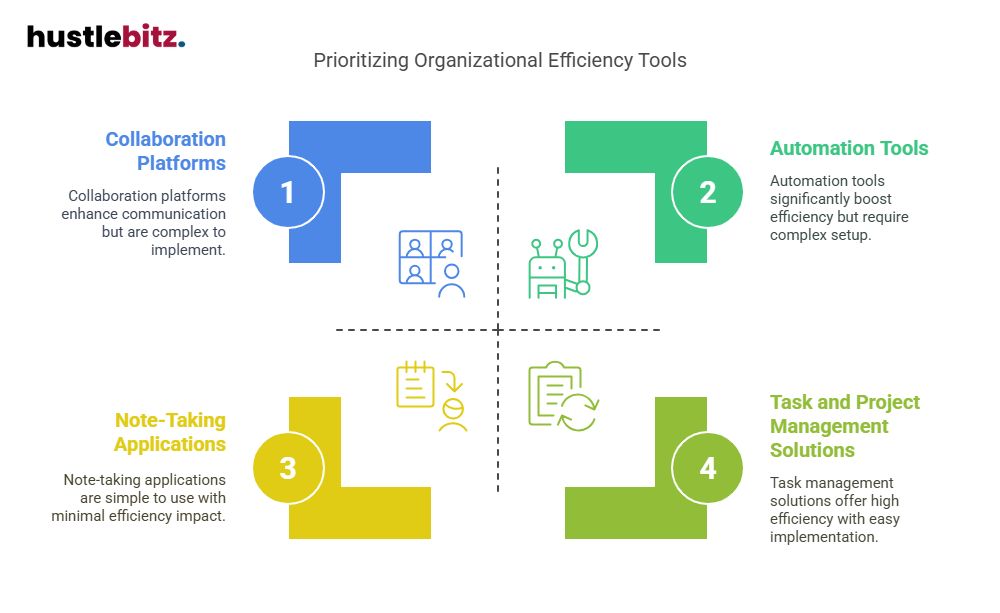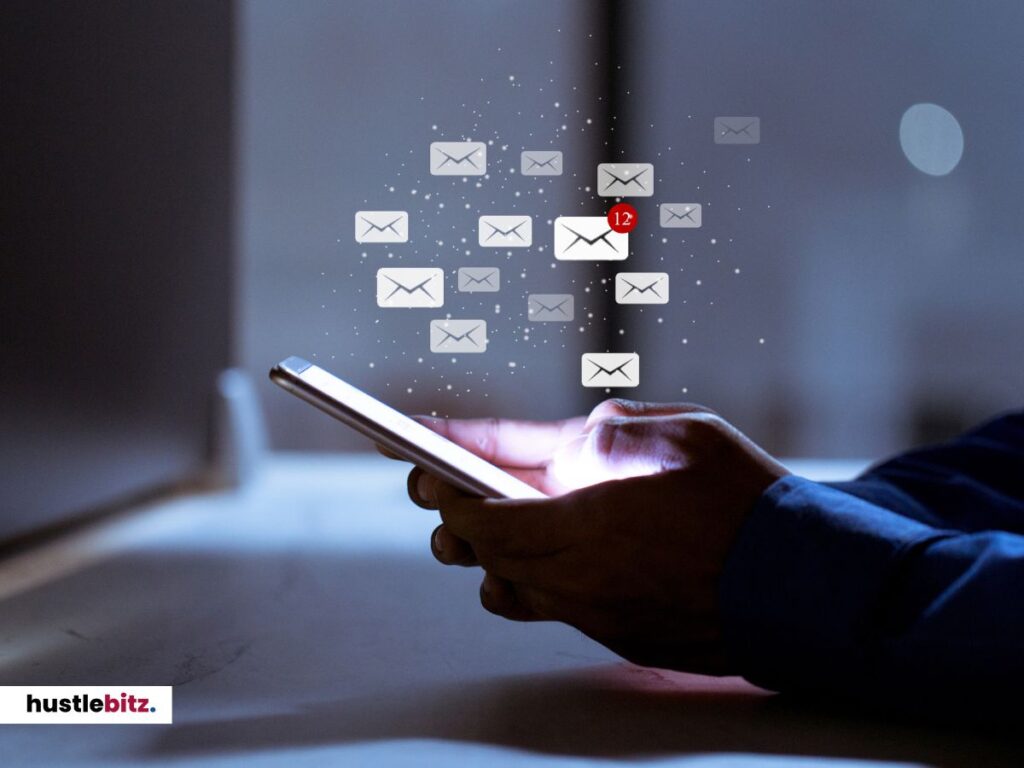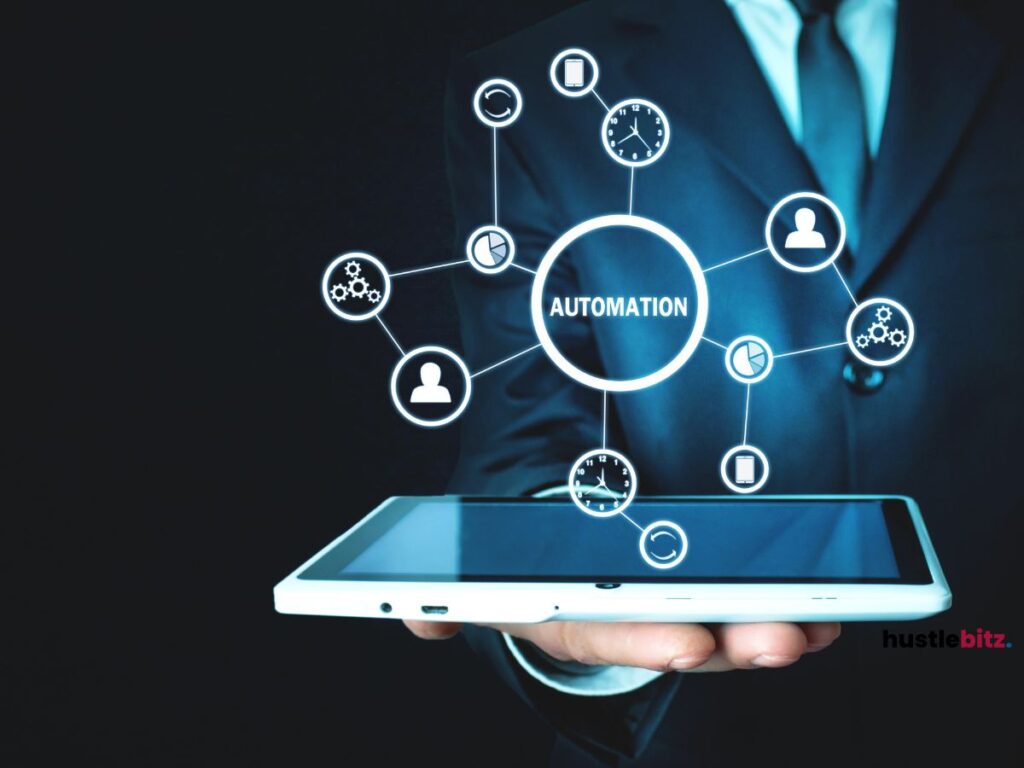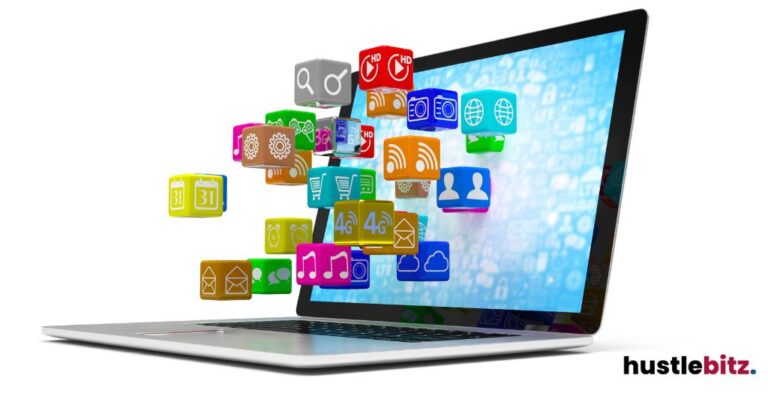In 2024, optimizing your workflow necessitates the use of effective productivity apps. Task management solutions and project management software enhance organization and team collaboration. Time tracking tools and habit tracking apps foster accountability and time efficiency. Note-taking applications streamline information capture, while collaboration platforms facilitate seamless communication. Additionally, automation tools save time by handling repetitive tasks, and focus apps improve concentration and reduce stress. With a strong emphasis on user-friendly interfaces and data privacy, these tools will evolve to meet your needs. Explore more about the best options to elevate your productivity this year.
Key Takeaways
- Explore task and project management solutions to enhance organizational efficiency and prioritize tasks effectively for streamlined workflows in 2024.
- Utilize time tracking tools to optimize productivity, assess resource allocation, and promote a healthy work-life balance.
- Leverage collaboration platforms for seamless communication, document sharing, and real-time editing among team members to improve project outcomes.
- Implement automation tools to streamline repetitive tasks and enhance overall efficiency, allowing teams to focus on higher-value activities.
- Consider note-taking applications for structured information organization and collaboration, enabling better retention and accessibility of critical data.

Task Management Solutions

Task management solutions are essential tools for enhancing organizational efficiency and ensuring that teams can effectively prioritize and track their projects. These applications facilitate the implementation of task delegation strategies, which empower team members to take ownership of specific responsibilities. By employing goal-setting techniques, organizations can establish clear objectives, aligning individual tasks with broader organizational goals.
Priority assessment methods within these solutions allow teams to evaluate the urgency and importance of tasks, thereby fostering better decision-making. Workload balancing tips embedded in task management tools help distribute tasks evenly across team members, preventing burnout and promoting productivity.
To enhance team accountability practices, these solutions often include features that track progress and performance, ensuring that all team members are aware of their contributions. Deadline management approaches are pivotal, as they enable teams to set realistic timelines and adjust them as necessary to accommodate changes.
Task visualization tools, such as Kanban boards and Gantt charts, provide a clear overview of project timelines and individual responsibilities, making it easier to monitor progress. Additionally, productivity metrics analysis offers insights into team performance, helping to identify areas for improvement.
Workflow optimization techniques are integrated within these platforms to streamline processes, while task elimination strategies assist in identifying and removing non-essential tasks, allowing teams to focus on what truly matters.
Time Tracking Tools

Effective time tracking tools are crucial for organizations seeking to optimize productivity and accurately assess how resources are allocated across various projects.
By implementing robust time management strategies, businesses can enhance remote work efficiency and adapt to changing operational landscapes. These tools serve as performance measurement tools, providing valuable insights into individual and team productivity, which fosters productivity mindset shifts.
Utilizing time tracking tools aids in identifying workplace distraction solutions, allowing employees to manage their time effectively and focus on essential tasks. This can lead to improved employee engagement techniques, as workers feel more accountable and motivated when they can see their progress in real time.
Moreover, these tools can be integrated with goal setting frameworks, enabling teams to align their efforts with larger organizational objectives while maintaining a clear view of their contributions.
Furthermore, effective time tracking supports work-life balance methods by encouraging employees to adhere to set hours and avoid overworking, thereby addressing burnout prevention tactics.
These tools also promote delegation best practices by highlighting where resources may be underutilized, allowing managers to redistribute tasks more efficiently.
Collaboration Platforms

Collaboration platforms are essential tools that facilitate seamless communication and cooperation among team members, enhancing productivity and project outcomes in today’s dynamic work environment. These platforms enable effective team communication and provide features that support virtual brainstorming, document sharing, and real-time editing. With the rise of remote collaboration, organizations are increasingly relying on these tools to ensure cohesive teamwork regardless of geographical barriers.
The following table highlights some of the key features of popular collaboration platforms:
| Feature | Description | Example Tools |
| Team Communication | Channels for messaging and video conferencing | Slack, Microsoft Teams |
| Document Sharing | Easy sharing and access to files | Google Drive, Dropbox |
| Real-Time Editing | Multiple users can edit documents simultaneously | Google Docs, Microsoft 365 |
These platforms often incorporate robust feedback mechanisms, allowing team members to provide input on projects efficiently. Their integration capabilities enable users to connect with other tools, enhancing overall user experience. Security features are paramount, ensuring sensitive information remains protected. Additionally, accessibility options cater to diverse user needs, fostering inclusivity within teams.
Note-Taking Applications

Note-taking applications play a crucial role in enhancing individual and team productivity by providing a structured way to capture, organize, and retrieve information efficiently. In 2024, these digital notebooks have evolved to incorporate various features that cater to diverse user needs. From traditional handwritten notes to advanced multimedia notes, note-taking applications offer a versatile platform for all types of learners and professionals.
Many applications now support voice memos, allowing users to record thoughts and ideas quickly without the need for typing. This feature is particularly beneficial during meetings, where capturing real-time information is essential. Furthermore, cloud storage ensures that notes are accessible from multiple devices, offering seamless synchronization and backup.
For those who prefer a visual approach, sketching apps integrated within note-taking software provide tools for drawing diagrams or illustrations, enhancing comprehension and retention. Annotation tools enable users to highlight and comment on existing documents, fostering a collaborative environment for team projects.
The capability for collaborative notes encourages teamwork, allowing multiple users to edit and contribute simultaneously. Additionally, offline access ensures that users can continue working without interruption, regardless of internet availability. The search functionality simplifies information retrieval, making it easy to locate specific notes or topics quickly.
Project Management Software

As teams increasingly rely on organized note-taking to capture ideas and decisions, the demand for robust project management software continues to grow. These tools provide structured frameworks to plan, execute, and monitor projects effectively. They are essential for organizations adopting agile methodologies, allowing for iterative progress and flexibility in project execution.
Project management software often includes customizable project templates that streamline the initiation phase. This feature enables teams to kick-start projects with predefined processes. Enhanced team communication features facilitate collaboration, ensuring that all stakeholders are informed and engaged throughout the project lifecycle.
Effective resource allocation tools help teams identify and distribute tasks based on individual strengths and availability, optimizing workforce productivity. Milestone tracking is a crucial component that allows teams to visualize progress and adjust strategies as needed, ensuring that project timelines remain intact.
Additionally, robust risk management features assist in identifying potential issues early, providing teams with the insights necessary to mitigate risks before they escalate.
For financial transparency, project budgeting functionalities enable teams to allocate funds intelligently. Reporting tools generate real-time updates on performance metrics. This data-driven approach aids management in making informed decisions, contributing to overall project success.
Email Productivity Enhancers

How can email productivity enhancers transform the way professionals manage their communication and streamline their workflows? In today’s fast-paced work environment, effective email management is crucial.
Utilizing email categorization techniques allows users to sort messages into relevant folders or labels, reducing clutter and enabling quicker access to important information. Coupled with inbox zero strategies, professionals can maintain a clear inbox, ensuring that no critical messages are overlooked.
Email response templates can significantly expedite communication, providing ready-to-use replies for common inquiries. This efficiency is further enhanced by email follow-up reminders, which help ensure that no conversation falls through the cracks, promoting timely responses and fostering better relationships.
Moreover, email scheduling tools enable users to plan messages for optimal delivery times, while email analytics insights offer valuable data on open rates and engagement, helping to refine communication strategies. Effective email list management is essential for those in marketing, ensuring that communications reach the right audience without compromising on relevance.
Additionally, well-crafted email signature designs can leave a lasting impression, reinforcing brand identity with every message sent. As security remains a priority, implementing robust email security practices is vital to protect sensitive information from potential threats.
Lastly, conducting email client comparisons can guide professionals in selecting the most suitable tools to enhance their email management experience, ultimately leading to improved productivity and streamlined workflows in 2024.
Automation Tools

In the quest for enhanced productivity, automation tools have emerged as vital assets that streamline repetitive tasks, allowing professionals to focus on higher-value activities. These tools enable workflow automation, transforming how businesses manage their operations and enhancing overall efficiency. By automating mundane tasks, organizations can minimize errors and reduce the time spent on manual processes.
Modern automation solutions often come equipped with AI integrations, which further enhance their capabilities. These intelligent systems can analyze patterns within business processes to optimize tasks, ensuring that resources are utilized effectively. For instance, CRM automation allows sales teams to automatically manage customer interactions, improving follow-up efficiency and fostering better client relationships.
Moreover, many software solutions now offer robust data synchronization features, ensuring that information remains consistent across platforms. This is particularly important in today’s interconnected environment, where cloud services and integration platforms play a crucial role in maintaining seamless operations. Automated notifications can also be implemented to keep teams informed about critical updates or deadlines, ensuring that everyone stays aligned on project goals.
Ultimately, the adoption of automation tools is not merely a trend but a strategic move towards a more productive future. By leveraging these technologies, organizations can streamline their workflows, allowing employees to concentrate on innovation and strategic initiatives rather than getting bogged down by repetitive tasks. As businesses continue to evolve, embracing automation will be essential to staying competitive and agile in an ever-changing landscape.
Focus and Mindfulness Apps
Focus and mindfulness apps have become essential tools for enhancing concentration and promoting mental well-being in today’s fast-paced work environment. These applications equip users with various techniques to cultivate focus, reduce stress, and improve productivity. By integrating mindfulness meditation into daily routines, individuals can develop a greater awareness of their thoughts, emotions, and behaviors, ultimately fostering a sense of calm amidst chaos.
Many of these apps offer structured programs that incorporate breathing exercises and cognitive exercises designed to enhance attention training. Users can engage in productivity rituals that include time blocking, allowing them to allocate specific periods for focused work, reducing distractions, and improving task completion rates. Additionally, visualization practices help users envision their goals, thereby motivating them to maintain their focus.
A significant advantage of focus and mindfulness apps is their ability to assist in digital detox efforts, encouraging users to disconnect from the overwhelming influx of information and notifications that often disrupt concentration. This intentional break from technology can significantly enhance one’s ability to engage in focus techniques that support sustained attention.
Furthermore, these apps often provide resources for stress management, offering guided sessions that address anxiety and promote emotional resilience. As professionals increasingly recognize the importance of mental well-being, the utilization of focus and mindfulness apps has become a vital component in achieving a balanced and productive work life.
File Organization Systems

Streamlining digital workflows relies heavily on effective file organization systems that enhance accessibility and efficiency in managing information. Implementing robust digital filing systems can significantly improve how teams interact with data, especially in collaborative environments.
Utilizing file tagging strategies allows users to categorize documents intuitively, facilitating quicker file retrieval techniques and minimizing time lost searching for critical information.
Cloud storage solutions provide a flexible infrastructure for storing and sharing files, enabling seamless collaboration across various devices and locations. When implementing these systems, it is essential to adhere to folder hierarchy best practices, ensuring that files are structured logically for easy navigation.
Additionally, incorporating document versioning helps maintain a clear history of changes, which is vital for accountability and transparency.
File sharing protocols must be established to define how documents are exchanged securely among team members, preventing unauthorized access and ensuring data integrity. Coupled with effective data backup methods, these protocols protect against data loss, a critical aspect of electronic document management.
For long-term preservation, organizations should also consider archival storage options, allowing for the retention of less frequently accessed files while keeping primary workspaces uncluttered.
Habit Tracking Apps
Utilizing habit tracking apps can significantly enhance personal productivity by providing users with the tools to monitor their behaviors, set goals, and establish positive routines. These applications are designed to support effective habit formation strategies, enabling individuals to identify and implement daily routine optimization techniques.
Through structured goal setting, users can break down their aspirations into manageable tasks, fostering a sense of achievement as they progress. Habit tracking apps often incorporate progress visualization features, allowing users to see their advancements over time, which serves as a crucial motivation technique. Additionally, integrating reward systems within these apps can further encourage behavior change by reinforcing positive actions with tangible incentives.
For those seeking additional support, many habit tracking apps enable users to connect with accountability partners. This feature promotes a collaborative environment, where individuals can share experiences, challenges, and successes, enhancing motivation and commitment to their goals. Moreover, self-reflection practices are encouraged, enabling users to assess their habits critically and make necessary adjustments.
Mindfulness integration is another vital aspect of habit tracking applications. By promoting awareness of one’s actions and thoughts, these apps facilitate a deeper understanding of personal behaviors and their impacts on overall productivity. Ultimately, habit tracking apps serve as comprehensive tools that not only streamline workflows but also cultivate a more intentional and productive lifestyle for users in 2024 and beyond.
Final Thoughts
Choosing the right productivity apps can greatly enhance your workflow and efficiency. By integrating task management, time tracking, collaboration, and automation tools, you can streamline processes, boost team performance, and maintain focus. Note-taking apps and habit trackers further support effective organization and positive routines. Selecting tools that fit your specific needs and staying updated on the latest advancements will ensure you optimize productivity and achieve your goals effectively. Embrace these solutions to navigate the demands of the modern work environment and achieve a balanced, productive work life.




